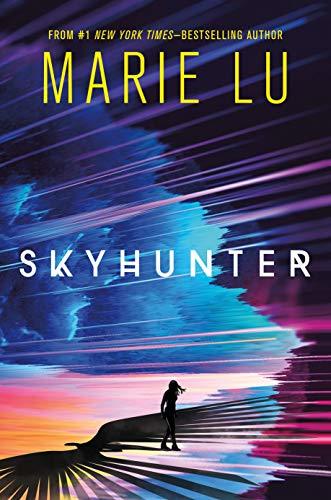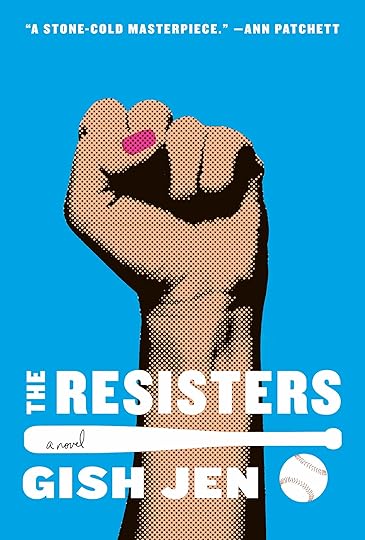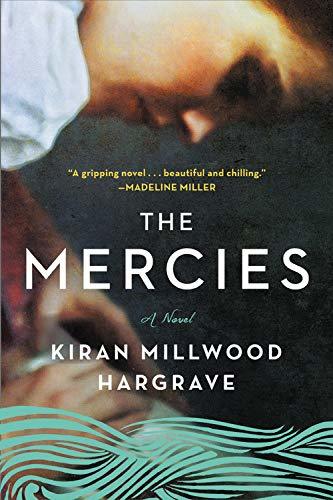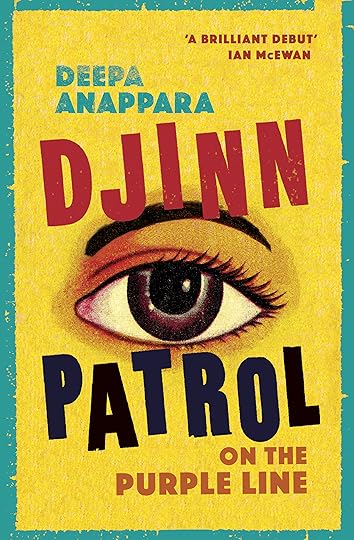Stephen Hong Sohn's Blog, page 23
October 13, 2020
A Review of Marie Lu’s Skyhunter (Roaring Brook, 2020).
![[personal profile]](https://i.gr-assets.com/images/S/compressed.photo.goodreads.com/hostedimages/1491408111i/22407843.png) jacobballew
jacobballew

Well, you know, I didn’t expect to have such a strong reaction to this novel even though I’m a huge fan of Marie Lu. I’ve read pretty much everything she’s written (with the exception of Kingdom of Back, which I must get to). I enjoyed her Legend series, the Young Elites series, and the Wildcard series. She’s moved onto a new series inaugurated with Skyhunter! Let’s let official marketing description get us off the ground:
“Talin is a Striker, a member of an elite fighting force that stands as the last defense for the only free nation in the world: Mara. A refugee, Talin knows firsthand the horrors of the Federation, a world-dominating war machine responsible for destroying nation after nation with its terrifying army of mutant beasts known only as Ghosts. But when a mysterious prisoner is brought from the front to Mara's capital, Talin senses there’s more to him than meets the eye. Is he a spy from the Federation? What secrets is he hiding? Only one thing is clear: Talin is ready to fight to the death alongside her fellow Strikers for the only homeland she has left . . . with or without the boy who might just be the weapon to save—or destroy—them all.”
This description is pithy precisely because if there was any more written about the narrative much would be revealed, so I will try to keep things under wraps. The strikers are basically trained to protect Mara; they learn to fight in pairs. A striker is simultaneously their partner’s shield. Talin’s partner ends up being injured by a Ghost at the opening of the novel. The problem with this kind of injury is that if you’ll end up turning into a Ghost, so Talin actually has to kill her own partner and thus her own shield. The plot really starts to move forward once the mysterious prisoner shows up. Talin decides that there’s something strange about this prisoner and advocates for him just before he is to be executed. Talin ends up saving the prisoner’s life but not without cost: as a kind of indirect punishment, Talin is forced to pair up with the prisoner, nicknamed Red, who is now supposed to become Talin’s shield. Lu’s done some fantastic world building in this novel, and I think it’s truly her best fantastic landscape. The Federation is an awe-inspiringly evil big bad, so you desperately want Talin and her comrades to find a way to survive, even despite almost impossible circumstances. As the narrative moves on, I generally found it a little bit dark for my personal tastes, but I know that Lu is also setting up for at least one other installment, so there has to be some stakes. Where the first novel ends up, you’re absolutely wondering how Lu will manage to get some of the major characters out of the predicaments there are in, but I for once am eager to find out if there will be some form of justice in this darkly drawn fictional world. An unputdownable YA fiction!
Buy the Book Here:
https://us.macmillan.com/books/9781250221681
 comments
comments
A Review of Rowan Hisayo Buchanan’s Starling Days (Overlook Press, 2020).
![[personal profile]](https://i.gr-assets.com/images/S/compressed.photo.goodreads.com/hostedimages/1491408111i/22407843.png) jacobballew
jacobballew

I remember enjoying Rowan Hisayo Buchanan’s debut Harmless Like You, so I was happy to see she put out another novel: Starling Days (Overlook Press, 2020)! Let’s let the official marketing description get us off the ground:
“On their first date, Mina told Oscar that she was bisexual, vegetarian, and on meds. He married her anyhow. A challenge to be met. She had low days, sure, but manageable. But now, maybe not so much . . . Mina is standing on the George Washington Bridge late at night, staring over the edge, when a patrol car drives up. She tries to convince the policeman she’s not about to jump, but he doesn’t believe her. Oscar is called to pick her up. With the idea of leaving New York for London—a place for Mina ‘to learn the floorplan of this sadness’—Oscar arranges a move. In London, Mina, a classicist, tries grappling with her mental health issues by making lists. Of WOMEN WHO SURVIVED—Penelope, Psyche, Leda. Iphigenia, but only in one of the tellings. Of things that make her HAPPY—enamel coffee cups. But what else? She at last finds a beam of light in Phoebe, and friendship and attraction blossom until Oscar and Mina’s complicated love is tested. A gorgeously wrought novel, variously about love, mythology, mental illness, Japanese beer, and the times we need to seek out milder psychological climates, Rowan Hisayo Buchanan’s Starling Days—written in exquisite prose rich with lightly ironic empathy—is a complex and compelling work of fiction by a singularly gifted young writer.”
So, I hate making slippery comparisons, but as I moved further and further in the text, I couldn’t but think of the movie The Break-Up, which starred Jennifer Aniston and Vince Vaughn. It’s pretty clear early on in the text that Oscar and Mina’s relationship is on the rocks. Buchanan immediately cues us into Mina’s fragile state, especially when Oscar has to leave London to help out with some business dealings related to his father. Mina, while she’s on her own in London, finds herself gravitating toward Phoebe. This occurrence is not a surprise, as Buchanan’s third person narrator continually provides us a strong sense of the attraction that Mina already feels. It seems only a matter of time before Mina is falling for Phoebe, or at least she’s becoming incredibly attached. For his part, Oscar is wrestling with how to remain in a relationship with someone who has changed, at least in terms of mental health. So, the novel really shows us how a once in-love couple starts to drift apart. Buchanan’s most compelling depiction appears in her razor-sharp ability to show exactly how a couple eventually disintegrates. Yet, in terms of plotting, this kind of narrative has a sort of retrogression that does not always proceed with the kind of alacrity that a reader might want. Buchanan must always be lauded for her careful and meticulous depiction of depression; her narrative does much to remind us that people must deal with depression cannot simply take a pill and feel better, nor is it simply a trick of changing one’s perspective. Mina’s own obsession with the women who survive the myths is not only an academic one. It’s clearly a way for her to ponder the challenges she faces herself: why should she live? what is the point of her existence? These questions bog her significantly down. Buchanan doesn’t leave us with a sentimental ending, but there is just enough of a glimmer of hope that we have the sense that Mina mind find her way out of quagmire that is depression.
Buy the Book Here:
https://www.abramsbooks.com/product/starling-days_9781419743597/
 comments
comments
A Review of Hari Kunzru’s Red Pill (Knopf, 2020).
![[personal profile]](https://i.gr-assets.com/images/S/compressed.photo.goodreads.com/hostedimages/1491408111i/22407843.png) jacobballew
jacobballew

After having read Hari Kunzru’s White Tears, I was supremely interested in what Kunzru had coming down the pipeline, a novel titled Red Pill (Knopf, 2020). Yes, the title does refer to that pivotal scene in The Matrix when Neo downs the “red pill” to find out he lives in a simulated reality. The truth at stake in Kunzru’s novel is not quite so literalized, but let’s let the official marketing blurb give us some background:
“After receiving a prestigious writing fellowship in Germany, the narrator of Red Pill arrives in the Berlin suburb of Wannsee and struggles to accomplish anything at all. Instead of working on the book he has proposed to write, he takes long walks and binge-watches Blue Lives—a violent cop show that becomes weirdly compelling in its bleak, Darwinian view of life—and soon begins to wonder if his writing has any value at all. Wannsee is a place full of ghosts: Across the lake, the narrator can see the villa where the Nazis planned the Final Solution, and in his walks he passes the grave of the Romantic writer Heinrich von Kleist, who killed himself after deciding that ‘no happiness was possible here on earth."’When some friends drag him to a party where he meets Anton, the creator of Blue Lives, the narrator begins to believe that the two of them are involved in a cosmic battle, and that Anton is ‘red-pilling’ his viewers—turning them toward an ugly, alt-rightish worldview—ultimately forcing the narrator to wonder if he is losing his mind.”
The last line of this description is probably the operative one, as much of the novel makes the reader have to situate this narrative on the hinge point of whether or not you think the narrator is losing his mind. I fell on the side that he was not. While Kunzru’s narrator does question his own sense of reality at times, what he seems to be struggling with is whether or not there is any chance for his wife and his child to be safe, given all the possible bad things that can happen. Kunzru’s narrator, while on his writing retreat, seems to be wrestling with the reality that he cannot ensure that his wife and his child will ever be truly protected from all the different things that can harm them. The narrator’s connection to Blue Lives is thus quite thorny: he sees the show as too naturalistic and thus pessimistic in its determinism. There must be some sense of possibility and optimism despite so much darkness that can erupt in life. Indeed, there is a sequence involving a refugee father and her daughter that has the narrator question whether or not there is any justice at all for the weak and the impoverished. As the novel truly crashes into its apocalyptic ending, you begin to understand where Kunzru is really leading us. In this sense, the novel achieves its most devastating revelation and makes the entire sequences leading up to it pale in comparison to the danger that seems to have befallen all of us. Sparkling with this kind of darkness, the novel is certainly a compelling read for these complicated times.
Buy the Book Here:
https://www.barnesandnoble.com/w/red-pill-hari-kunzru/1135275383
 comments
comments
September 4, 2020
A Review of Gish Jen’s The Resisters (Knopf, 2020)
![[personal profile]](https://i.gr-assets.com/images/S/compressed.photo.goodreads.com/hostedimages/1491408111i/22407843.png) jacobballew
jacobballew

Hardcover | $26.95
Published by Knopf
Feb 04, 2020 | 320 Pages | 5-5/8 x 8-1/4 | ISBN 9780525657217
Gish Jen has returned to fiction! There’ve been a couple of nonfictional books that have come out, so I know some of us has been recently waiting for Jen’s next fictional offering, which has appeared in the guise of a sports/science fictional novel: The Resisters (Knopf, 2020). Let’s let Jen’s official site give us the set-up: “The time: not so long from now. The place: AutoAmerica. The land: half under water. The Internet: one part artificial intelligence, one part surveillance technology, and oddly human–even funny. The people: Divided. The angel-fair “Netted” have jobs, and literally occupy the high ground. The copper-toned “Surplus” live on swampland if they’re lucky, on water if they’re not. The story: To a Surplus couple–he once a professor, she still a lawyer–is born a Blasian girl with a golden arm. At two, Gwen is hurling her stuffed animals from the crib; by ten, she can hit whatever target she likes. Her teens find her happily playing in an underground baseball league. When AutoAmerica rejoins the Olympics, though–with a special eye on beating ChinRussia–Gwen attracts interest. Soon she finds herself playing ball with the Netted even as her mother challenges the very foundations of this divided society. A moving and important story of an America that seems only too possible, The Resisters is also the story of one family struggling to maintain its humanity in circumstances that threaten their every value–even their very existence. Extraordinary and ordinary, charming and electrifying, this is Gish Jen at the height of her powers - and at her most irresistible.”
It’s interesting that the description only describes Gwen, as the novel is probably as much about her mother, as it is about Gwen. This novel is one of those few types that are narrated in the first person but not autodiegetic (ugh, narratology term I know). What I mean is the novel is basically narrated in the first person by Gwen’s dad, Grant, but he is more of an observer than a driver of action. Never is this fact more apparent than in the section where Gwen goes to the land of the netted, where she attends Net U, and practices with the U’s baseball team. She’s so talented that she simultaneously negotiates the admittance of her sometimes friend, sometimes enemy Ondi (also Blasian). Ondi’s family and Gwen’s family do have some overlaps, as members of their family have been asked to CrossOver, the term used to describe the few Surplus individuals who might become Netted. In any case, Gwen’s mom didn’t CrossOver, and Gwen’s just as conflicted about the possibility that she can Crossover. Eventually, Gwen gets sick of the internal politics of Net U and the life of the netted, and she returns to the land of the Surplus. The back half of the novel is definitely the strongest: I read this portion at full speed. The novel begins to veer into something that I can best describe as a mash-up of The Stepford Wives and A Wrinkle in Time. The mix of baseball and science fiction was intriguing, and I totally enjoyed it. I can’t really recall another narrative that mixed the two so well. But, perhaps, the most interesting “character” of this particular novel is not any of the human figurations, but the massive, self-learning artificial intelligence entity known as Nettie, who sees all and apparently seems to hear all. Reading up on surveillance capitalism, I see how this novel fits quite well within that paradigm.
 comments
comments
A Review of Kiran Millwood Hargraves’s The Mercies (Little, Brown and Company)
![[personal profile]](https://i.gr-assets.com/images/S/compressed.photo.goodreads.com/hostedimages/1491408111i/22407843.png) jacobballew
jacobballew

Okay, so this novel SURPRISED ME. I absolutely loved it. I found the prose absolutely stunning, and the story swept me away. In any case, let’s let the official page get us started: “Finnmark, Norway, 1617. Twenty-year-old Maren Magnusdatter stands on the craggy coast, watching the sea break into a sudden and reckless storm. Forty fishermen, including her brother and father, are drowned and left broken on the rocks below. With the menfolk wiped out, the women of the tiny Arctic town of Vardø must fend for themselves. Three years later, a stranger arrives on their shore. Absalom Cornet comes from Scotland, where he burned witches in the northern isles. He brings with him his young Norwegian wife, Ursa, who is both heady with her husband’s authority and terrified by it. In Vardø, and in Maren, Ursa sees something she has never seen before: independent women. But Absalom sees only a place untouched by God, and flooded with a mighty evil. As Maren and Ursa are drawn to one another in ways that surprise them both, the island begins to close in on them, with Absalom’s iron rule threatening Vardø’s very existence.”
The fact that Hargraves’s novel is so close to Morrison’s A Mercy is no accident. They’re both set in the 17th century and deal with the problem of gender and otherness in a time when men’s rights establish so much of a given community’s protocol. The problem for the women of Vardø is that they take it upon themselves to survive, something that raises the suspicions of the pastor who eventually joins them and later a local bureaucrat. For those that are aware of the historical circumstances, you know where this novel is headed. I did not, but even as there are so many clues that things are going to go very badly, I kept hoping that Hargrave might be writing something counterfactual. The brilliance of this novel is in the unsentimental yet effortless pacing that occurs in relation to the connection between Ursa and Maren. I had little idea about where this particular plot would go and ever more worried, as it becomes apparent what is going on with the witch
trials.
Also, I learned quite a bit more about what we might call Norwegian racialization in the 17th century, at least with respect to indigeneity. The target of much of the suspicion falls on the Sámi people; they are suspected to deal in dark magics. You’re worried not only for any of the Sámi characters, but any of the characters that show any sort of sympathy of goodwill toward these peoples (which include Maren). While the conclusion is incredibly dark, Hargrave does provide readers with a minor opening for which to believe that there could be something still possible. Of course, what will carry us in this space of historical tragedy is Hargrave’s absolutely beautiful prose. A definite standout for me this year, right up there with Simon Jimenez’s Vanished Birds and Tishani Doshi’s Small Days and Nights.
Buy the Book Here:
https://www.littlebrown.com/titles/kiran-millwood-hargrave/the-mercies/9780316529228/
 comments
comments
A Review of Aravind Adiga's Amnesty
![[personal profile]](https://i.gr-assets.com/images/S/compressed.photo.goodreads.com/hostedimages/1491408111i/22407843.png) jacobballew
jacobballew

This review is covering Aravind Adiga’s Amnesty (Scribner, 2020). I’ve been a fan of Adiga since reading both The White Tiger and Between the Assassinations. Most readers will be familiar with Adiga since The White Tiger won the Booker Prize way back in the day. I still recall how I tried to listen to the audiobook of The White Tiger on a drive down from the Bay Area to Southern California and only seemed to understand about 25% of what I heard. But I digress! Let’s get back to Amnesty: the official page gives us this description: “Danny—formerly Dhananjaya Rajaratnam—is an illegal immigrant in Sydney, Australia, denied refugee status after he fled from Sri Lanka. Working as a cleaner, living out of a grocery storeroom, for three years he’s been trying to create a new identity for himself. And now, with his beloved vegan girlfriend, Sonja, with his hidden accent and highlights in his hair, he is as close as he has ever come to living a normal life. But then one morning, Danny learns a female client of his has been murdered. The deed was done with a knife, at a creek he’d been to with her before; and a jacket was left at the scene, which he believes belongs to another of his clients—a doctor with whom Danny knows the woman was having an affair. Suddenly Danny is confronted with a choice: Come forward with his knowledge about the crime and risk being deported? Or say nothing, and let justice go undone? Over the course of this day, evaluating the weight of his past, his dreams for the future, and the unpredictable, often absurd reality of living invisibly and undocumented, he must wrestle with his conscience and decide if a person without rights still has responsibilities. Propulsive, insightful, and full of Aravind Adiga’s signature wit and magic, Amnesty is both a timeless moral struggle and a universal story with particular urgency today.”
A couple of things to note right off the bat. The novel is certainly at first influenced by the mystery plot, as readers wonder who killed the female client, whose name is Radha. Danny has a good idea about who it actually is, but Adiga takes some time letting us into all that Danny knows and has experienced. As we discover, Radha had been having a tumultuous affair with a man by the name of Prakash.
**Spoiler**
Another intriguing element to this novel is the form and narrative approach. Adiga employs a kind of stream-of-consciousness style that reminded me somewhat of Woolf’s prose. Perhaps, not coincidentally, Adiga also employs rough time markers throughout the day to give the sense of immediacy to Danny’s day. I have to admit that I found Adiga’s aesthetic approach a bit challenging from the readerly angle. There was a higher level of fragmentation due to the narrative perspective approach that Adiga uses. Nevertheless, the novel makes for an intriguing consideration of diasporic migration as well as the complications of South Asian/Anglophone identity formations.
Buy the Book Here:
https://www.simonandschuster.com/books/Amnesty/Aravind-Adiga/9781982127244
 comments
comments
A Review of Deepa Annapara’s Djinn Patrol on the Purple Line (Random House, 2020).
![[personal profile]](https://i.gr-assets.com/images/S/compressed.photo.goodreads.com/hostedimages/1491408111i/22407843.png) jacobballew
jacobballew

So, it took me a couple of tries to really dig into this novel. I had a little bit of trouble getting into the discursive voice that predominates in Deepa Annapara’s Djinn Patrol on the Purple Line (Random House, 2020), which is given over to a young teen named Jai. Let’s let the editorial description give us some more information: “In a sprawling Indian city, three friends venture into the most dangerous corners to find their missing classmate. . . .Down market lanes crammed with too many people, dogs, and rickshaws, past stalls that smell of cardamom and sizzling oil, below a smoggy sky that doesn’t let through a single blade of sunlight, and all the way at the end of the Purple metro line lies a jumble of tin-roofed homes where nine-year-old Jai lives with his family. From his doorway, he can spot the glittering lights of the city’s fancy high-rises, and though his mother works as a maid in one, to him they seem a thousand miles away. Djinn Patrol on the Purple Line plunges readers deep into this neighborhood to trace the unfolding of a tragedy through the eyes of a child as he has his first perilous collisions with an unjust and complicated wider world. Jai drools outside sweet shops, watches too many reality police shows, and considers himself to be smarter than his friends Pari (though she gets the best grades) and Faiz (though Faiz has an actual job). When a classmate goes missing, Jai decides to use the crime-solving skills he has picked up from TV to find him. He asks Pari and Faiz to be his assistants, and together they draw up lists of people to interview and places to visit. But what begins as a game turns sinister as other children start disappearing from their neighborhood. Jai, Pari, and Faiz have to confront terrified parents, an indifferent police force, and rumors of soul-snatching djinns. As the disappearances edge ever closer to home, the lives of Jai and his friends will never be the same again. Drawing on real incidents and a spate of disappearances in metropolitan India, Djinn Patrol on the Purple Line is extraordinarily moving, flawlessly imagined, and a triumph of suspense. It captures the fierce warmth, resilience, and bravery that can emerge in times of trouble and carries the reader headlong into a community that, once encountered, is impossible to forget.”
I had a mixed reaction to this novel when I finished it and let me proceed by stating I am only giving my readerly opinion. As a text with a politically engaged vision, this novel is an unqualified success. You certainly understand how the children and teens who populate the slums of the city are considered to be a kind of societal discard, so once they start disappearing, the slum inhabitants cannot rely on any official entities for help. The tragedy is that one of the most invested individuals in those disappearances in none other than our young narrator, who, without power or influence, really does try to see if he can make headway into these various mysteries. Annapara employs intercuts throughout the novel to show us the circumstances that lead up to each disappearance. There is enough ambiguity in each encounter to make you wonder who is behind these acts. Even when the novel eventually turns to the possibility that there is a child trafficking ring, there is truly no closure, which is perfectly apt given that what we have here is ultimately a kind of noir. My mixed reaction is that I found the novel a bit too episodic. Indeed, as each disappearance piles on to the next without any resolution to the last one, the lack of narrative resolution ultimately produced a sense of readerly ennui in me, even as I understood the gravity of the contexts that Annapara was providing us. But, I suppose, such a reaction makes one wonder about the balance one must strike between a compelling narratively plotted story and the politically textured work. To be sure, the novel’s focus on the trio of budding sleuths—Jai is working very hard alongside Pari and Faiz—makes for a winning combination, so there’s quite a lot to admire about this debut.
Buy the book Here:
https://www.penguinrandomhouse.com/books/609915/djinn-patrol-on-the-purple-line-by-deepa-anappara/
 comments
comments
September 3, 2020
A Review of Victoria Ying’s City of Secrets
![[personal profile]](https://i.gr-assets.com/images/S/compressed.photo.goodreads.com/hostedimages/1491408111i/22407843.png) jacobballew
jacobballew

Hardcover | $22.99
Published by Viking Books for Young Readers
Jul 28, 2020 | 256 Pages | 6 x 9| Middle Grade (8-12)| ISBN 9780593114483
This graphic novel was a real pleasant surprise. I sort of wanted a break from standard narrative, so it arrived at just the right moment. I also refused to go to bed at first and was rummaging around, trying to figure out what to read. Well, Victoria Ying’s City of Secrets (Viking Books for Young Readers, 2020) was most certainly the right pick. Let’s let the official marketing description give us some context: “Ever Barnes is a shy orphan guarding a secret in an amazing puzzle box of a building. Most of the young women who work at the building's Switchboard Operating Facility, which connects the whole city of Oskar, look the other way as Ever roams around in the shadows. But one of them, Lisa, keeps an eye on the boy. So does the head of the Switchboard, Madame Alexander . . . a rather sharp eye. Enter Hannah, the spunky daughter of the building's owner. She thinks Ever needs a friend, even if he doesn't know it yet. Good thing she does! Lisa and Madame Alexander are each clearly up to something. Ever is beset by a menacing band of rogues looking to unlock the secret he holds—at any cost. And whatever is hidden deep in the Switchboard building will determine all of their futures. On a journey that twists and turns as much as the mechanical building Ever Barnes calls home, he and his new friend Hannah have to and out what's really going on in this mysterious city of secrets . . . or else!” It was interesting to later hear Ying speak on a podcast about the challenges of drawing this graphic novel, as it is based upon a fictional city, Oskar, that is made of moving parts. Yes, parts of the city can shift and move. The Switchboard itself is one large building that is constantly in motion. Fortunately for the Switchboard workers, Ever also happens to know how the building works, so even if there is a minor hiccup, he is there to fix things. There are a ton of twists and turns in this plot, especially as it becomes known that Ever is being targeted by some nefarious individuals. Ever is entrusted with a secret: a safe must be guarded, even though he does not know what is inside. Eventually, Ever is forced to open the safe. With Hannah’s help, they begin to unravel a larger secret that will likely impact the future of Oskar. Ying leaves us with some dangling questions by the graphic novel’s end, so there’s likely to be at least one sequel. I really did appreciate hearing Ying speak about her process and the things she learned when completing this work. For instance, she began to understand why other graphic artists often choose to use more simple costumes for their characters. As Ying discovered, it enables them to keep the continuity without having to spend so much extra time on difficult-to-redraw clothes. Ying also discussed her manga-inspired roots, with her interest in Ranma ½, which was also a favorite of mine, so that was very cool. In any case, there is much to laud in this particular work which crackles with a unique plot and hooks us with the dynamic interplay between its two spritely protagonists. This is sure to be a hit amongst readers of all ages, not just the targeted demographic.
Watch the (AMAZING) animated trailer here: https://www.youtube.com/watch?v=zMlVcJ8DH2Y
Buy the Book Here:
https://www.barnesandnoble.com/w/city-of-secrets-victoria-ying/1134673154
 comments
comments
A Review of Kawai Strong Washburn’s Sharks in the Time of Saviors (MCD, 2020).
![[personal profile]](https://i.gr-assets.com/images/S/compressed.photo.goodreads.com/hostedimages/1491408111i/22407843.png) jacobballew
jacobballew

So, I read Kawai Strong Washburn’s Sharks in the Time of Saviors (MCD, 2020) in anticipation of a course on speculative fiction concerning American writers of color. Washburn’s work fits perfectly based upon its narrative conceit and opening: “In 1995 Kailua-Kona, Hawaii, on a rare family vacation, seven-year-old Nainoa Flores falls overboard a cruise ship into the Pacific Ocean. When a shiver of sharks appears in the water, everyone fears for the worst. But instead, Noa is gingerly delivered to his mother in the jaws of a shark, marking his story as the stuff of legends. Nainoa’s family, struggling amidst the collapse of the sugarcane industry, hails his rescue as a sign of favor from ancient Hawaiian gods—a belief that appears validated after he exhibits puzzling new abilities. But as time passes, this supposed divine favor begins to drive the family apart: Nainoa, working now as a paramedic on the streets of Portland, struggles to fathom the full measure of his expanding abilities; further north in Washington, his older brother Dean hurtles into the world of elite college athletics, obsessed with wealth and fame; while in California, risk-obsessed younger sister Kaui navigates an unforgiving academic workload in an attempt to forge her independence from the family’s legacy. When supernatural events revisit the Flores family in Hawai’i—with tragic consequences—they are all forced to reckon with the bonds of family, the meaning of heritage, and the cost of survival.” The novel uses (primarily) four alternating perspectives to great effect: Nainoa, Dean, Kaui, and their mother all receive primary storytelling billing, and we follow their rotating perspectives, as each character grows, matures, and must deal with Nainoa’s growing abilities. I will put in somewhat of a spoiler here, —so look away if you do not want to know—
**Spoiler**
From there the novel sort of begins a slow disintegration. By the word “disintegration,” I don’t mean that it loses its beautifully crafted qualities but rather that the family faces one of its biggest tests, one that pushes them to consider what it is that binds them and why it is that Nainoa ever came to be saved by the sharks. Washburn’s prose is as magical as his story, and it is his great attention and love for his characters that makes this work rise to its highest levels. My only minor quibble with this text is that I wanted more of the Hawaiian folklore explored in a more informational way, only insofar as I think some of the impact of the novel’s ending was lost of me because I didn’t understand all of the cultural contexts. Despite my readerly limitations, the book is sure to be read widely and joins a rich tradition of regionalist literature set in Hawaii. A novel fit to be taught next to Lois Ann Yamanaka’s Behold the Many or R. Zammora Linmark’s Rolling the R’s.
Buy the Book Here:
https://us.macmillan.com/books/9780374272081
 comments
comments
September 2, 2020
A Review of Quan Barry’s We Ride Upon Sticks (Knopf, 2020)
![[personal profile]](https://i.gr-assets.com/images/S/compressed.photo.goodreads.com/hostedimages/1491408111i/22407843.png) jacobballew
jacobballew

2020 might be the year of the Asian American sports novel (alongside Gish Jen’s The Resisters and Sameer Pandya’s Members Only)! I loved this novel! It was the perfect tonality to read during the stress of the COVID pandemic. I only wish that the description below provided the names of all the members on the field hockey team: “Acclaimed novelist Quan Barry delivers a tour de female force in this delightful novel. Set in the coastal town of Danvers, Massachusetts, where the accusations began that led to the 1692 witch trials, We Ride Upon Sticks follows the 1989 Danvers High School Falcons field hockey team, who will do anything to make it to the state finals—even if it means tapping into some devilishly dark powers. In chapters dense with 1980s iconography—from Heathers to ‘big hair’—Barry expertly weaves together the individual and collective progress of this enchanted team as they storm their way through an unforgettable season. Helmed by good-girl captain Abby Putnam (a descendant of the infamous Salem accuser Ann Putnam) and her co-captain Jen Fiorenza (whose bleached blond “Claw” sees and knows all), the Falcons prove to be wily, original, and bold, flaunting society's stale notions of femininity in order to find their glorious true selves through the crucible of team sport and, more importantly, friendship.” The team includes: Julie Minh, Abby Putnam, Jen Fiorenza, Girl Cory, Boy Cory, Sue Yoon, and many others. At some point, early on in the text, Jen Fiorenza comes up with a sort of plan to have everyone sign a kind of “devilish” contract in a book that holds the image of—gasp—Emilio Estevez. Then all the field hockey team members promise that they will keep a blue string tied tightly around their arms. These actions are all meant to help the Falcons turn their team into one with a winning percentage. Indeed, they change from a 2-8 team to a team that’s winning practically every game. You can’t help but wonder when their luck will turn, but the whole point is that the teens believe they must do increasingly naughty things to make sure their win streak continues. Such antics include making false accusations and trying to live more promiscuous lives, but the tonality of Barry’s novel is not one of speculation or terror, witchcraft and social policing. Instead, it’s really a sports novel that focuses on female camaraderie and the unique spirit of community forged in a special time for these teenagers. Perhaps, my favorite part of this novel is that it’s written primarily in the collective second person. There are very few novels that are written in this way. One of the few exceptions is Julie Otsuka’s The Buddha in the Attic. The narrative discourse is absolutely the right one, as the girls explore their connections with each other and make them stronger over the course of the year. I also absolutely adored how well Barry is able to cultivate the individual character of each member of the team. This coming-of-age novel would also pair quite well with Kim Fu’s The Lost Girls of Camp Forevermore. The spirited comic hijinks of this team are the perfect antidote to our viral times.
Buy the Book Here:
https://www.penguinrandomhouse.com/books/602077/we-ride-upon-sticks-by-quan-barry/
 comments
comments



